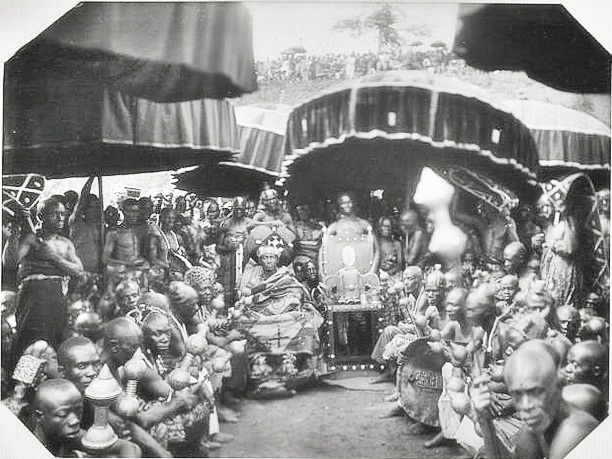
The Ashanti Kingdom shaped Ghana’s history with its political power, rich culture, and fierce resistance to colonial domination.
The Ashanti Kingdom: Power, Culture, and Resistance in Ghana’s History
The Ashanti Kingdom stands as one of the most remarkable civilizations in West African history, known for its centralized political system, rich cultural traditions, and fierce resistance to colonial domination. Established in the late 17th century in the forest belt of present-day Ghana, the Ashanti Kingdom grew into a powerful state that shaped the destiny of the Gold Coast for centuries. Its story is one of political ingenuity, cultural pride, and resilience in the face of foreign incursions.
Foundations of the Ashanti Kingdom
The Ashanti Kingdom emerged in the late 1600s under the leadership of Osei Tutu, who unified several Akan states into one centralized authority. With the guidance of his spiritual advisor, Okomfo Anokye, Osei Tutu consolidated power, forged unity among diverse clans, and established Kumasi as the capital.
A central symbol of unity was the Golden Stool, believed to embody the soul of the Ashanti nation. According to tradition, the stool descended from the heavens through Okomfo Anokye and represented the spiritual essence of the people. It became the rallying point of loyalty and resistance, a sacred object no foreigner was permitted to sit upon.
Political Power and Organization
The Ashanti Kingdom’s political system was highly advanced for its time. It was structured around a confederacy, with the Asantehene (king) at the apex. The Asantehene presided over the council of chiefs, which included leaders from the various states that made up the confederacy. This allowed for a balance between central authority and local autonomy.
The kingdom also had a standing army that was well-organized and formidable. Using disciplined infantry and cavalry, the Ashanti expanded their territory and secured trade routes. At its peak, the Ashanti Kingdom controlled vast lands and influenced neighboring regions through diplomacy and warfare.
Economic Prosperity Through Trade
The kingdom’s prosperity was built on its control of trade, particularly in gold, kola nuts, and later, slaves. Positioned strategically within the forest zone, the Ashanti controlled key trade routes linking the interior to coastal markets. Gold, mined in abundance from Ashanti lands, became the backbone of the economy and the source of its international reputation.
Through trade with Europeans on the coast—first the Portuguese, then the Dutch, British, and others—the Ashanti gained access to firearms, cloth, and luxury goods. This strengthened their military and economic standing, further cementing Kumasi as a hub of commerce and governance.
Cultural Heritage and Traditions
The Ashanti Kingdom is also renowned for its rich cultural expressions. Kente cloth, woven with intricate patterns and vibrant colors, emerged as a symbol of prestige and identity. Festivals such as Akwasidae continue to this day, celebrating the ancestors, reinforcing loyalty to the Golden Stool, and showcasing the pageantry of Ashanti tradition.
Religion and spirituality were also central to Ashanti life. Traditional beliefs emphasized reverence for ancestors, the role of deities, and rituals that connected the living with the spiritual world. Arts, crafts, and oral literature flourished, leaving a cultural legacy that still resonates in Ghana today.
Resistance to Colonial Rule
The Ashanti Kingdom’s encounter with European colonial powers, particularly the British, was marked by fierce resistance. From the early 19th century through the early 20th century, the Ashanti fought a series of wars with the British known as the Anglo-Ashanti Wars.
One of the most celebrated moments of defiance came in 1900, during the War of the Golden Stool. When the British governor demanded to sit on the Golden Stool, the Ashanti, led by the fearless queen mother Yaa Asantewaa, rose in revolt. Though the uprising was eventually suppressed, Yaa Asantewaa’s leadership became a symbol of resistance and pride in Ghanaian history.
Despite repeated British military campaigns, the Ashanti Kingdom was never fully subdued until 1901, when it was incorporated into the British Gold Coast colony. Yet, even under colonial rule, the Ashanti identity and traditions remained strong, preserved through their chiefs, festivals, and cultural expressions.
Legacy of the Ashanti Kingdom
Today, the Ashanti Kingdom continues to exist as a traditional state within Ghana, with the Asantehene recognized as a cultural and spiritual leader. Kumasi remains the cultural heartbeat of the Ashanti people, home to the Manhyia Palace, traditional festivals, and a thriving cultural heritage that draws visitors from across the world.
The legacy of the Ashanti Kingdom is one of resilience, strength, and enduring pride. Its history is not only about political power and economic wealth but also about cultural preservation and the determination to defend sovereignty.
Conclusion
The Ashanti Kingdom’s story is a reminder of Africa’s sophisticated civilizations long before colonial intrusion. With its centralized political system, economic might, and cultural achievements, the Ashanti Kingdom stood as a beacon of African power. Its resistance to colonialism, particularly the defiant spirit of leaders like Yaa Asantewaa, continues to inspire generations. In the heart of Ghana, the Golden Stool still symbolizes unity, reminding all that the Ashanti Kingdom is not merely history—it is a living legacy.
RECOMMENDED ARTICLES
- The Ghana Empire: West Africa’s First Power
- Akan Day Names: Identity in Every Birth
- Dr. J.B. Danquah: Ghana’s Freedom Fighter
- Damba Festival: Celebrating Northern Ghana’s Rich Cultural Heritage
USEFUL LINKS
